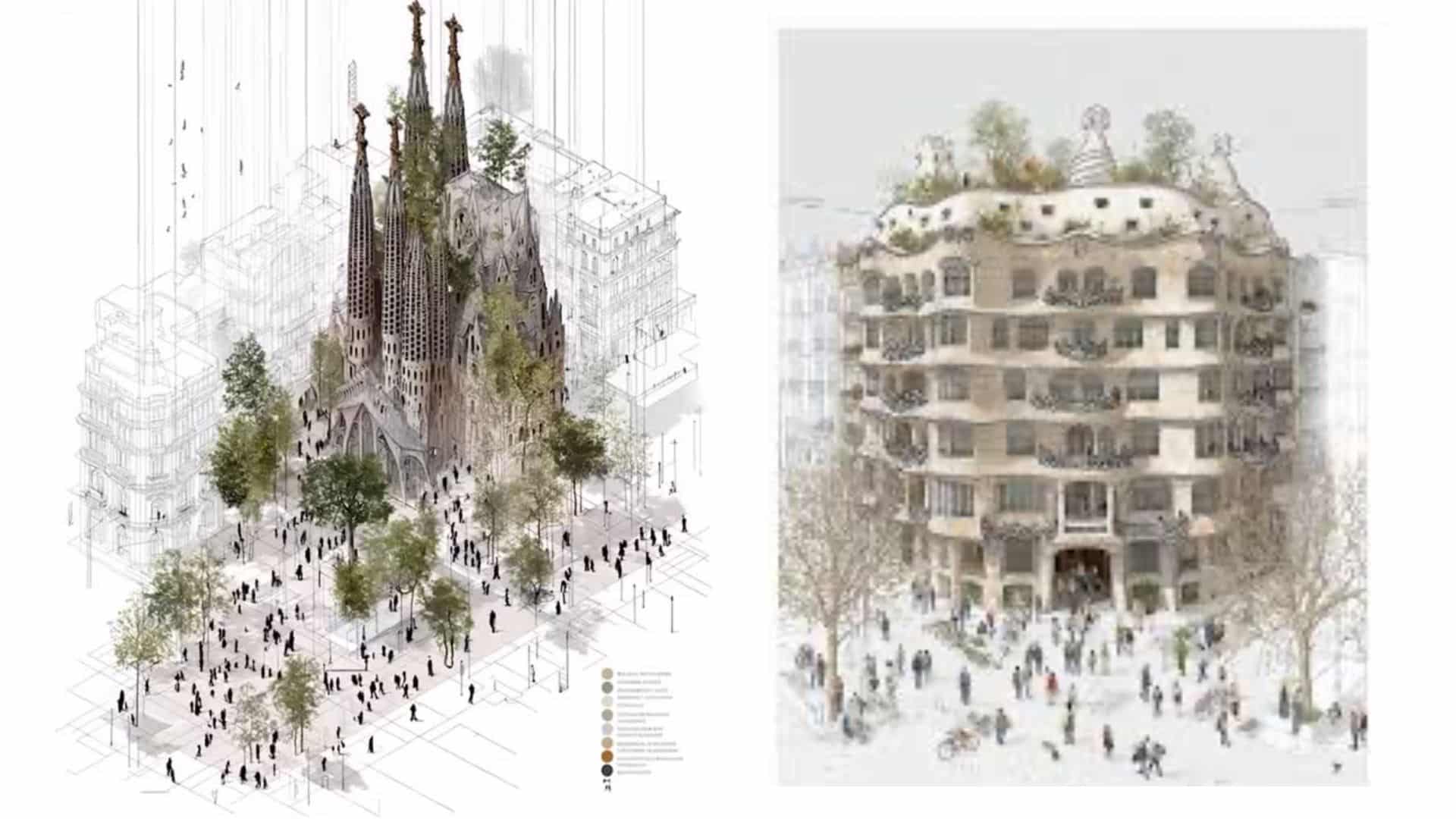Imagine standing inside a room that Antoni Gaudí never finished drawing. The columns twist, the roofline dances, and yet—it was never built. Not even sketched. But now, thanks to AI, it exists.
We’ve entered a world where algorithms don’t just replicate style—they extend imagination. Gaudí’s once-incomplete ideas are being brought to life, not by hand, but by neural networks and virtual reality.
What Happens When AI Trains on Gaudí’s Mind?
At the Universitat Politècnica de Catalunya, researchers trained neural networks on thousands of archival Gaudí sketches and photos. These AI models learned the deep geometry, curvature, and fluid imagination that defines Gaudí’s work.
The result?
AI systems that can:
- Predict how an unfinished arch would curve into a pillar
- Guess how a roofline might rise if the sketch continued
- Extend partial designs into complete architectural facades
Even more surprising—in blind tests, architects sometimes found the AI-generated extensions more imaginative than Gaudí’s originals.
That’s not imitation. That’s improvisation.
From a Line to a Walkable World — Apple’s GAUDI Project
Apple took this to the next level with their internal GAUDI research project, which converts a simple sketch or a text prompt into a fully immersive 3D scene you can explore in VR.
It uses two key AI technologies:
- Diffusion Models – fill in missing visual details from even the most minimal inputs
- Neural Radiance Fields (NeRFs) – render those visuals into a volumetric space, letting you walk around, inspect, and relight scenes from any angle
This means:
- A doodle can become a room
- A text prompt can become a courtyard
- A Gaudí fragment can become a full immersive cathedral
Want to know how this pairs with other XR techniques? Check out our article on VR in Construction Industry and Architecture of Virtual Reality Systems.
Casa Batlló Comes Alive — AI x Digital Art
Not all of this stays inside the headset.
Digital artist Sofia Crespo recently projected AI-generated marine life patterns onto the flowing facade of Casa Batlló in Barcelona. The result?
A surreal, living canvas where Gaudí’s curves became waves, shimmering with dynamic textures inspired by nature.
The installation blurred time. A building from the 1900s became an interactive digital sculpture, engaging modern audiences with AI, art, and architecture—all at once.
If AI Could Reimagine the Past — What Would You Revive?
“Gaudí sketched in silence. Today, algorithms can let those sketches speak—and even improvise.”
We now have the tools to collaborate with the past. To co-create with history. AI can finish what time left incomplete.
So…
If you could bring back one forgotten structure, artwork, or design—what would you choose? And how would you let it speak again?
If AI Could Reimagine the Past — What Would You Revive?
We’re living in a moment where AI isn’t just helping us look forward—it’s helping us look back with fresh eyes.
From VR-based spatial storytelling to neural design extensions, the fusion of tech and tradition is creating a new kind of heritage: interactive, immersive, and alive.
And maybe, just maybe… Gaudí would have smiled.


